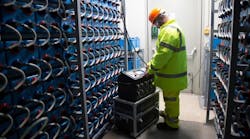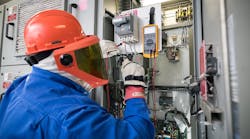Two areas of understanding that go a long way toward preventing Code confusion are Art. 90 and Art. 100. Article 100 provides definitions of important words that appear in more than one Article in the NEC; time spent here helps you avoid hearing one thing when another was actually said.
One common error is using the NEC as a design guide and either trying to meet its requirements exactly (not exceeding them) or, especially bad, considering them “nice to meet if it doesn’t cost too much.”
But the NEC requirements exist for “the practical safeguarding of persons and property from hazards arising from the use of electricity.” It’s not a design guide and certainly isn’t intended to be an instruction manual for untrained persons [90.1].
You’re expected to know what you’re doing and apply sound judgment where the NEC requirements aren’t sufficient to produce an installation that’s “efficient, convenient, or adequate for good service or future expansion of electrical use.”
Nothing in the NEC prohibits you from locating light switches on the far wall from the doorway to a room (unless you count the good workmanship requirement as covering this). Or behind the door, once it’s swung open. You’re not going to burn the place down or suffer a shock due to either location, but these locations are hugely inconvenient.
Many times, engineering judgment requires upsizing conductors from the NEC minimums. You might do this to reduce voltage drop or you might do this to account for loads that are not yet installed, but probably will be.
So what happens when your design exceeds the NEC but the customer (be it the plant controller, general contractor, home owner, etc.) wants you to prove that the NEC requires the “extra cost”?
Rather than turn to the specific requirement, you turn to Sec. 90.1 and begin your explanation there. This is especially useful when advocating for working space that exceeds the NEC minimums; those minimums don’t account for such things as needing to get portable lights or a maintenance cart into that space.
Those working space minimums aren’t about making maintenance or repair efficient. If downtime for critical equipment runs into six figures or higher per hour and an additional 16 inches of space can reduce that downtime by 20 percent, then the additional space is very likely to be approved. Or what if simply increasing space enough to permit regular infrared analysis can prevent downtime altogether? What’s that space worth when a single incident of downtime costs $2 million? In many larger data centers, they know the answer to this question.
You can’t go the other direction (below the NEC minimums), but exceeding them is often warranted. Always apply engineering judgment to determine the correct design for the purpose served. And think about where you put those light switches.





